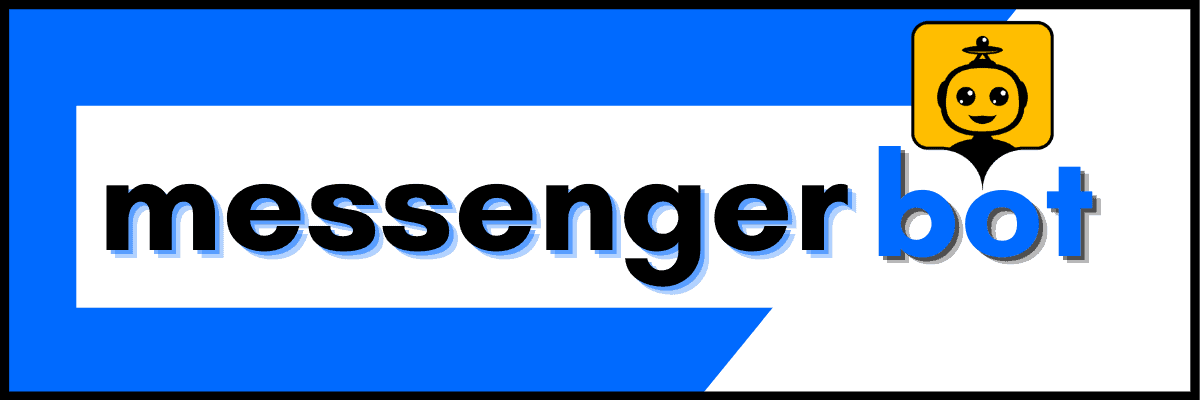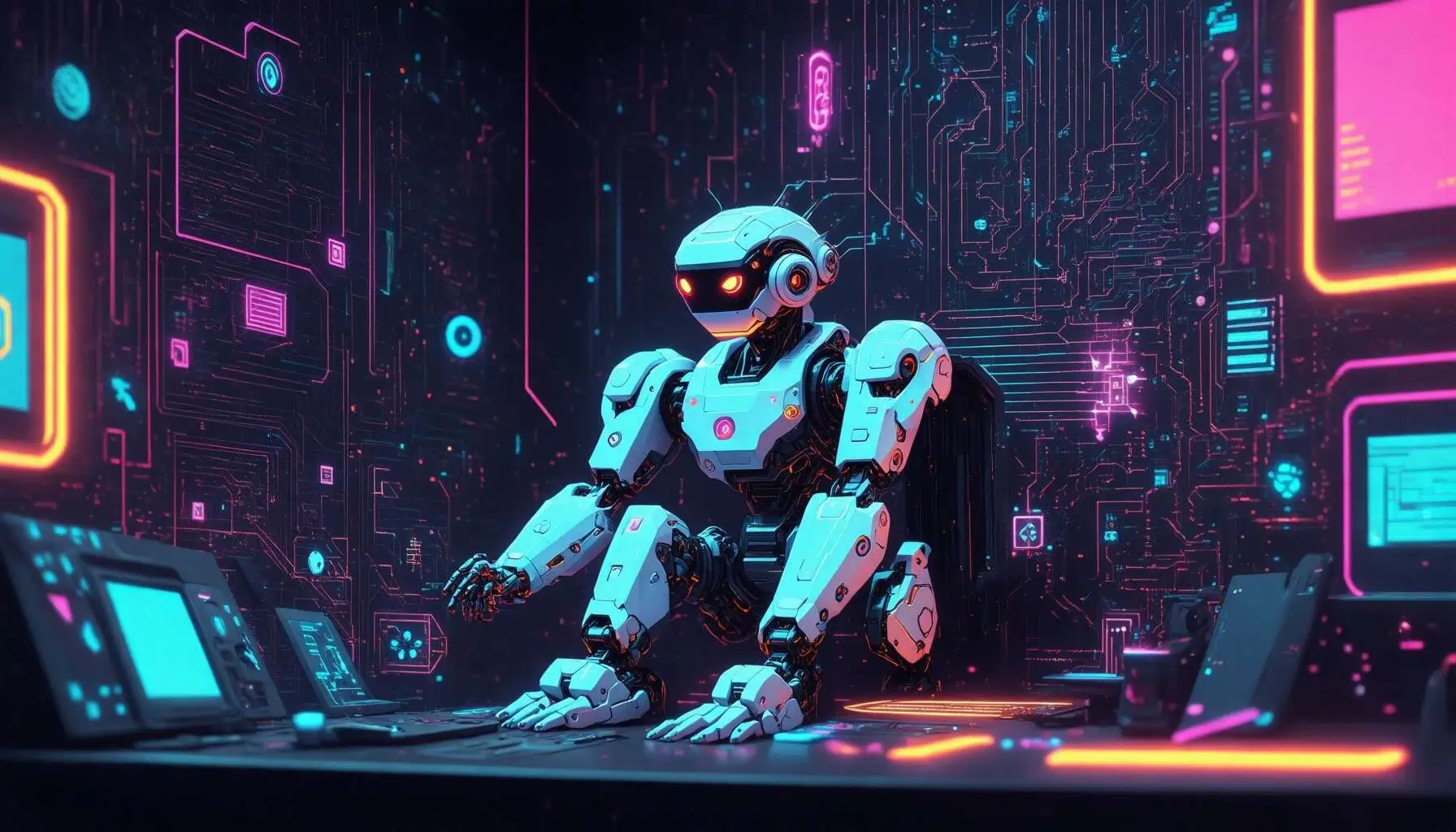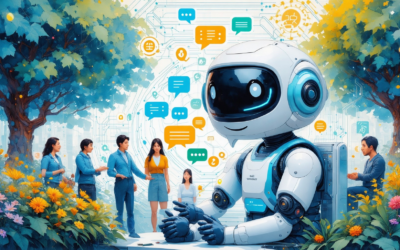Key Takeaways
- Bot programs are automated software applications that streamline tasks and enhance user engagement across various platforms.
- Understanding the legalities and ethical considerations of bot programming is essential for compliance and responsible usage.
- Game bot programming can significantly improve gameplay by automating repetitive tasks and simulating player behavior.
- Advanced bot technologies, including natural language processing and machine learning, enhance the capabilities and user interactions of bots.
- Implementing bots in customer support and lead generation can boost efficiency and improve overall customer satisfaction.
In the rapidly evolving world of technology, bot programs have emerged as a pivotal force, transforming various industries and redefining how we interact with software. This article delves into the fascinating realm of bot programming, exploring its legalities, diverse applications, and real-world examples that highlight the significance of bots in game programming and beyond. We will begin by understanding the basics of bot technologies and the key features that distinguish bot software from other digital tools. Following this foundational knowledge, we will address critical legal considerations surrounding the use of bots, including regulations and ethical implications. As we progress, we will examine the various applications of bots across industries, with a particular focus on game bot programming and how to create bots for games. Additionally, we will clarify the full meaning of bot and explore common terminology associated with bot programming. By the end of this article, you will have a comprehensive understanding of bot programs, their functionalities, and their impact on the digital landscape.
What is Bot Programming?
Bot programming refers to the process of creating automated software applications, commonly known as bots, that perform specific tasks across various platforms. These bots can streamline operations, enhance user engagement, and provide valuable insights through automation. Understanding the fundamentals of bot technologies is crucial for anyone looking to leverage these tools effectively in their business or personal projects.
Understanding the Basics of Bot Programs
A bot, short for “robot,” is an automated software application designed to perform repetitive tasks over a network, often mimicking human behavior with greater speed and accuracy. Bots can operate independently without human intervention, executing predefined instructions to complete various functions. There are several types of bots, including:
- Web Crawlers: These bots systematically browse the internet to index content for search engines like Google, enhancing the discoverability of web pages.
- Chatbots: Designed to engage in conversation with users, chatbots can provide customer support, answer queries, and facilitate transactions. For example, Messenger Bots operate within platforms like Facebook Messenger, allowing businesses to interact with customers in real-time.
- Social Media Bots: These bots automate interactions on social media platforms, such as posting updates, following users, or liking posts, which can enhance engagement and visibility.
- Scraper Bots: These bots extract data from websites for various purposes, including market research and competitive analysis.
- Gaming Bots: In online gaming, bots can simulate human players, providing a more dynamic experience or assisting in gameplay.
The development of bots involves programming languages such as Python, JavaScript, and Java, utilizing frameworks and APIs to enhance functionality. Recent advancements in artificial intelligence and machine learning have further improved bot capabilities, enabling them to learn from interactions and provide more personalized experiences.
Overview of Bot Technologies
Bot technologies encompass a wide range of tools and frameworks that facilitate the creation and deployment of bots. These technologies include:
- Natural Language Processing (NLP): This technology allows bots to understand and respond to human language, making interactions more intuitive and effective. For instance, Messenger Bots utilize NLP to interpret user queries and provide relevant responses.
- Machine Learning: By employing machine learning algorithms, bots can analyze user behavior and improve their responses over time, leading to enhanced user satisfaction.
- APIs and SDKs: Many bot platforms offer APIs and software development kits (SDKs) that simplify the integration of bots into existing systems, enabling seamless functionality across various applications.
For more detailed insights into bot programming and its applications, refer to resources from authoritative sources like the AWS documentation on bots and automation, or academic articles on AI-driven automation.

Understanding the Basics of Bot Programs
Bot programs are sophisticated software designed to automate tasks and enhance user interactions across various platforms. These programs utilize advanced bot technologies to streamline processes, making them invaluable in today’s digital landscape. Understanding the core functionalities and features of bot software is essential for leveraging their full potential.
Overview of Bot Technologies
Bot technologies encompass a range of tools and frameworks that enable the creation and deployment of bots. These technologies include natural language processing (NLP), machine learning, and artificial intelligence (AI), which allow bots to understand and respond to user queries effectively. For instance, Brain Pod AI offers a multilingual AI chat assistant that exemplifies how advanced bot technologies can facilitate seamless communication across different languages.
Moreover, the integration of these technologies into various platforms, such as social media and websites, enhances user engagement. By automating responses and managing interactions, bots can significantly improve customer service and operational efficiency.
Key Features of Bot Software
When evaluating bot software, several key features stand out:
- Automated Responses: Bots can provide instant replies to user inquiries, reducing wait times and improving user satisfaction.
- Workflow Automation: Businesses can create automated workflows that respond to specific user actions, enhancing engagement.
- Lead Generation: Bots can effectively capture leads through interactive messaging, making them a powerful tool for marketing.
- Multilingual Support: The ability to communicate in multiple languages allows businesses to cater to a global audience.
- Analytics: Bot software often includes analytics tools that provide insights into user interactions, helping businesses refine their strategies.
For those interested in exploring bot programs, many platforms offer free trials, allowing users to experience the benefits firsthand. Understanding these features is crucial for selecting the right bot program to meet specific business needs.
Applications of Bots in Various Industries
Bot programs have revolutionized how businesses operate across various sectors by automating tasks and enhancing user engagement. From customer service to data analysis, the applications of bots are vast and impactful. Understanding these applications can help businesses leverage bot technologies effectively.
Automation Bot Software in Business
Automation bot software is designed to streamline operations, reduce manual workload, and improve efficiency. Here are some key applications:
- Customer Support: Bots like Messenger Bot provide automated responses to frequently asked questions, allowing businesses to handle customer inquiries efficiently without human intervention. This not only saves time but also enhances customer satisfaction.
- Lead Generation: Bots can engage potential customers through interactive messaging, capturing leads and nurturing them through the sales funnel. This is particularly effective in e-commerce, where timely responses can lead to increased conversions.
- Data Processing: Bots can automate data entry and analysis, significantly reducing the risk of human error. By processing large volumes of data quickly, businesses can make informed decisions based on real-time insights.
Game Bot Programming and Its Uses
Game bot programming has gained popularity, especially in the gaming industry, where bots enhance user experience and gameplay. Here are some notable uses:
- NPC Behavior: Bots are used to program non-player characters (NPCs) in games, allowing them to interact with players in realistic ways. This enhances immersion and engagement within the game environment.
- Automated Testing: Developers use bots to automate testing processes, ensuring that games are free of bugs and perform well under various conditions. This saves time and resources during the development phase.
- Player Assistance: Bots can assist players by providing tips, strategies, or even automating certain gameplay elements, making the gaming experience more enjoyable and less frustrating.
Defining Bots and Their Full Form
The full meaning of “bot” refers to a software application designed to automate tasks, often performing them at a speed and efficiency beyond human capabilities. Here are the key definitions:
- Robot: Originally derived from the term “robot,” which refers to a mechanical device capable of carrying out a complex series of actions automatically. Robots can be physical machines or virtual entities.
- Automated Software: A bot is a computer program that executes automated, repetitive tasks, often in a manner that can be harmful or disruptive if misused. These tasks can range from simple data retrieval to complex interactions with users.
- Mimicking Human Actions: Bots can also refer to programs or characters that simulate human behavior, such as chatbots that engage in conversation with users, providing customer service or information.
- Types of Bots:
- Web Crawlers: Bots that index web pages for search engines.
- Chatbots: Programs designed to simulate conversation with human users, often used in customer service applications.
- Social Media Bots: Automated accounts that can post, like, or share content on platforms like Twitter and Facebook.
Bots play a significant role in various industries, enhancing efficiency and user interaction. For example, Messenger Bots are utilized on platforms like Facebook Messenger to automate customer interactions, providing instant responses and support. To explore more about the functionalities of bots, check out Understanding chatbots.
The Evolution of Bot Programs
Over the years, bot programs have evolved significantly, driven by advancements in technology and user needs. Initially, bots were simple scripts designed to perform basic tasks. However, with the rise of artificial intelligence and machine learning, modern bots have become more sophisticated, capable of understanding natural language and engaging in complex interactions.
This evolution has led to the development of various AI chatbot applications that cater to diverse industries, from customer service to e-commerce. The integration of bots into business processes has not only streamlined operations but also enhanced user experiences, making them indispensable tools in today’s digital landscape.
Distinction Between Bots and Other Software
While bots are a type of software, they differ significantly from traditional applications. Here are some key distinctions:
- Automation Focus: Bots are primarily designed to automate repetitive tasks, whereas traditional software often requires user input for operation.
- Interaction Capability: Bots, especially chatbots, are built to interact with users in a conversational manner, providing responses and assistance without human intervention.
- Scalability: Bots can handle multiple interactions simultaneously, making them more efficient for tasks like customer support compared to standard software that may operate on a one-to-one basis.
Understanding these differences is crucial for businesses looking to implement bot programs effectively. For further insights into the capabilities of bots, consider exploring resources like Brain Pod AI, which offers advanced AI solutions for various applications.

What is an Example of a Bot?
Bots, short for robots, are automated software applications designed to perform specific tasks over the internet. Here are some notable examples of bots:
- Search Engine Crawlers: These bots, such as Googlebot, systematically browse the web to index content for search engines, enhancing the visibility of websites in search results. They analyze page structure, keywords, and links to improve search engine optimization (SEO).
- Chatbots: Utilized in customer service, chatbots like Drift or Intercom engage with users in real-time, providing instant responses to inquiries. They can handle multiple queries simultaneously, improving customer satisfaction and operational efficiency.
- Social Media Bots: These bots automate interactions on platforms like Twitter and Facebook, managing tasks such as posting updates, following users, and responding to comments. They can help businesses maintain an active online presence.
- Scraping Bots: Employed to extract data from websites, scraping bots gather information for market research, price comparison, and competitive analysis. They can be used ethically for data collection but may also violate terms of service if misused.
- Messenger Bots: Integrated into messaging platforms like Facebook Messenger, these bots facilitate communication between businesses and customers, providing personalized experiences and automating responses to frequently asked questions.
Bot Program Examples in Gaming
In the gaming industry, bots play a crucial role in enhancing user experience and automating gameplay. Here are some examples of bot programs used in gaming:
- Game Bot Programming: Bots can be programmed to assist players by automating repetitive tasks, such as farming resources or completing quests. This not only saves time but also allows players to focus on more strategic aspects of the game.
- Coding Game Robots: Developers often create bots that can compete against human players, providing a challenging environment for testing skills. These bots can simulate various strategies and adapt to player behavior, making them valuable for training and development.
Notable Bots on GitHub
GitHub hosts a variety of bot programs that developers can utilize for different purposes. Some notable examples include:
- Chatbot Frameworks: Many developers share their chatbot frameworks on GitHub, allowing others to build and customize their own bots easily. These frameworks often include pre-built functionalities for natural language processing and user interaction.
- Game Bot Projects: There are numerous repositories dedicated to game bot programming, where developers can find code snippets and tutorials on how to create bots for popular games. This resource is invaluable for those looking to enhance their gaming experience through automation.
How to Create Bots for Games
Creating bots for games can enhance gameplay experiences, automate repetitive tasks, and even provide a competitive edge. With the right tools and knowledge, you can develop a bot program tailored to your specific gaming needs. Below is a comprehensive guide on how to get started with programming bots for games.
Step-by-Step Game Bot Tutorial
To create an effective game bot program, follow these essential steps:
- Define the Purpose: Determine what you want your bot to accomplish. Whether it’s automating tasks, enhancing gameplay, or simulating player behavior, having a clear goal is crucial.
- Select the Right Tools: Choose appropriate bot software or frameworks that align with your programming skills. Popular options include Unity for game development and Python for scripting.
- Learn the Basics of Coding: Familiarize yourself with programming languages relevant to game development, such as C# or JavaScript. Resources like AI chatbot tutorial can provide foundational knowledge.
- Develop the Bot Logic: Write the code that dictates how your bot will behave in the game. This includes decision-making processes, movement patterns, and interaction with other players or game elements.
- Test and Iterate: Run your bot in a controlled environment to identify any bugs or areas for improvement. Continuous testing will help refine its performance.
By following these steps, you can successfully program a robot game that enhances your gaming experience or serves specific functions within the game environment.
Resources for Bot Software Download
To get started with your bot programming game, consider utilizing the following resources:
- Free Bot Software Trials – Explore various bot software options without commitment.
- Create Your Own AI Chatbot – A detailed guide on building chatbots that can be adapted for gaming.
- Brain Pod AI – Offers advanced AI tools that can be integrated into your bot development process.
Utilizing these resources will provide you with the necessary tools and knowledge to create effective bots for your gaming projects.
How to Create Bots for Games
Creating bots for games involves a systematic approach that combines programming skills with an understanding of game mechanics. Whether you’re looking to automate tasks or enhance gameplay, the process can be broken down into manageable steps.
Step-by-Step Game Bot Tutorial
To develop a game bot, follow these essential steps:
- Choose Your Game: Select a game that allows bot integration. Popular choices include MMORPGs and strategy games.
- Understand Game Mechanics: Familiarize yourself with the game’s rules, objectives, and mechanics to ensure your bot operates effectively.
- Set Up Your Development Environment: Install necessary software tools and libraries that support game bot programming. Languages like Python and JavaScript are commonly used.
- Write the Bot Code: Begin coding your bot using the game’s API or scripting language. Focus on key functionalities such as movement, interaction, and decision-making.
- Test Your Bot: Run your bot in a controlled environment to identify bugs and ensure it performs as intended. Adjust the code based on testing outcomes.
- Optimize Performance: Refine your bot’s algorithms for efficiency and responsiveness, ensuring it can handle various in-game scenarios.
- Deploy and Monitor: Once satisfied with your bot’s performance, deploy it in the game. Continuously monitor its activity and make adjustments as necessary.
Resources for Bot Software Download
To get started with game bot programming, consider utilizing the following resources:
- Messenger Bot Tutorials – A comprehensive guide to creating bots that can be adapted for gaming.
- Brain Pod AI Chat Assistant – Explore AI capabilities that can enhance your bot’s functionality.
- AI Image Generation – Use AI tools to create unique assets for your game bot.
- AI Writing Services – Generate dialogue or narrative elements for your bot.




